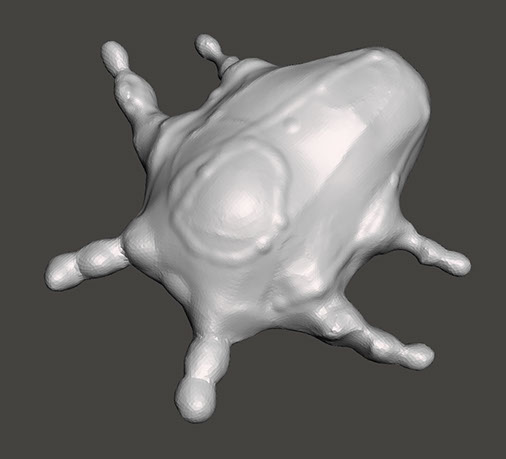Species: Cyclopoida
Student: Karl Fehn
Information:
Phytoplankton and Zooplankton are fundamental living organisms that are crucial to the ecosystem in several different aspects of aquatic life. I chose to sculpt a cyclopoida, part of the copepod family, as the zooplankton that I chose due to its shape. Copepods are typically found in freshwater environments. They are the subspecies of the general crustacea family that feeds mainly on other forms of plankton called phytoplankton. In terms of how this creature affects humans, they can often be found in water supplies in large cities that have an issue with filtration. This can become a problem due to the parasitic nature of copepods as without filtration a copepod can be a host to bacteria that could make people sick. A developing study for the early stage of copepod that I am studying has shown to affect red tides. While monitoring copepod eating habits with different foods, scientists found that the feeding rates increase in relation to the quantity of food in certain areas. Scientists also found that ingestion levels were also higher in larger copepods. Specifically, copepods have developed a tendency to feed on larger particles rather than feeding on normal size particles. This habit was most evident during red tide blooms. The health and security of fundamental marine life is crucial to the stability of life on Earth, copepods are a critical element in the structure of our food chain.
Bibliography
https://en.wikipedia.org/wiki/Copepod
https://link.springer.com/article/10.1007/BF00392743
